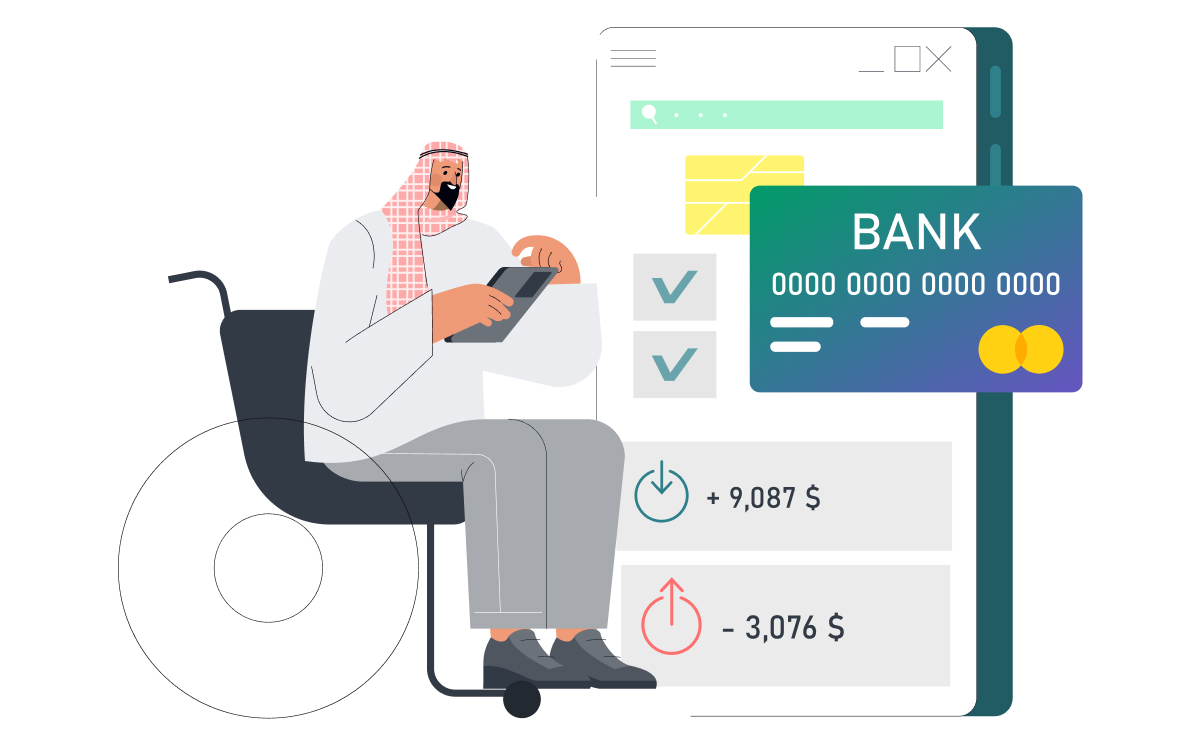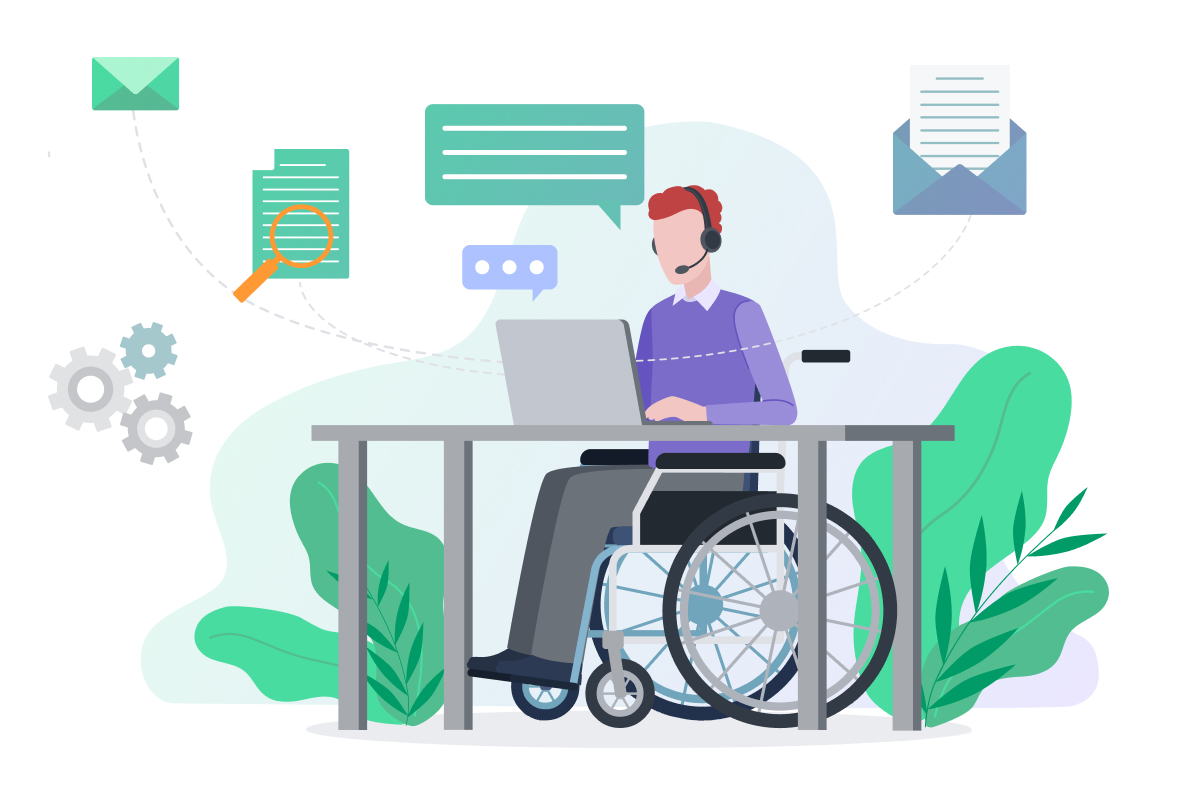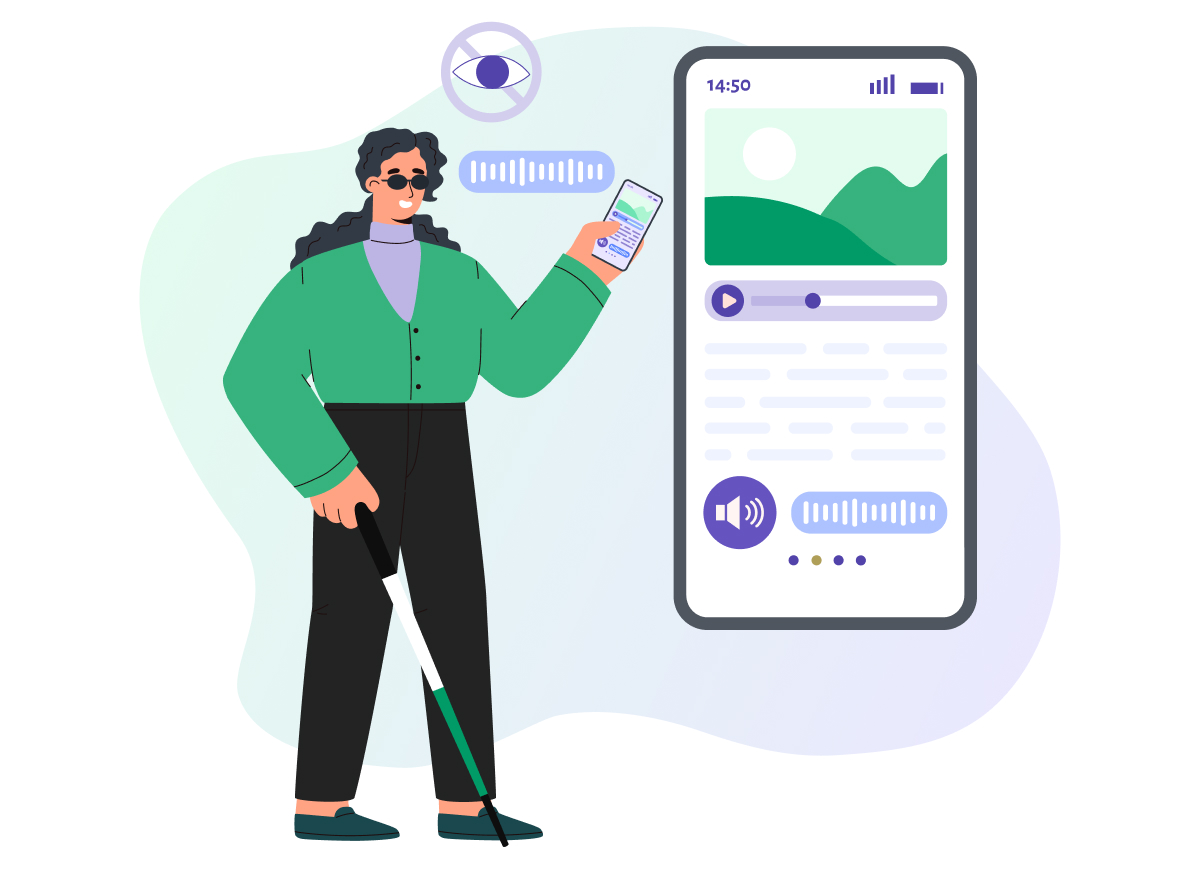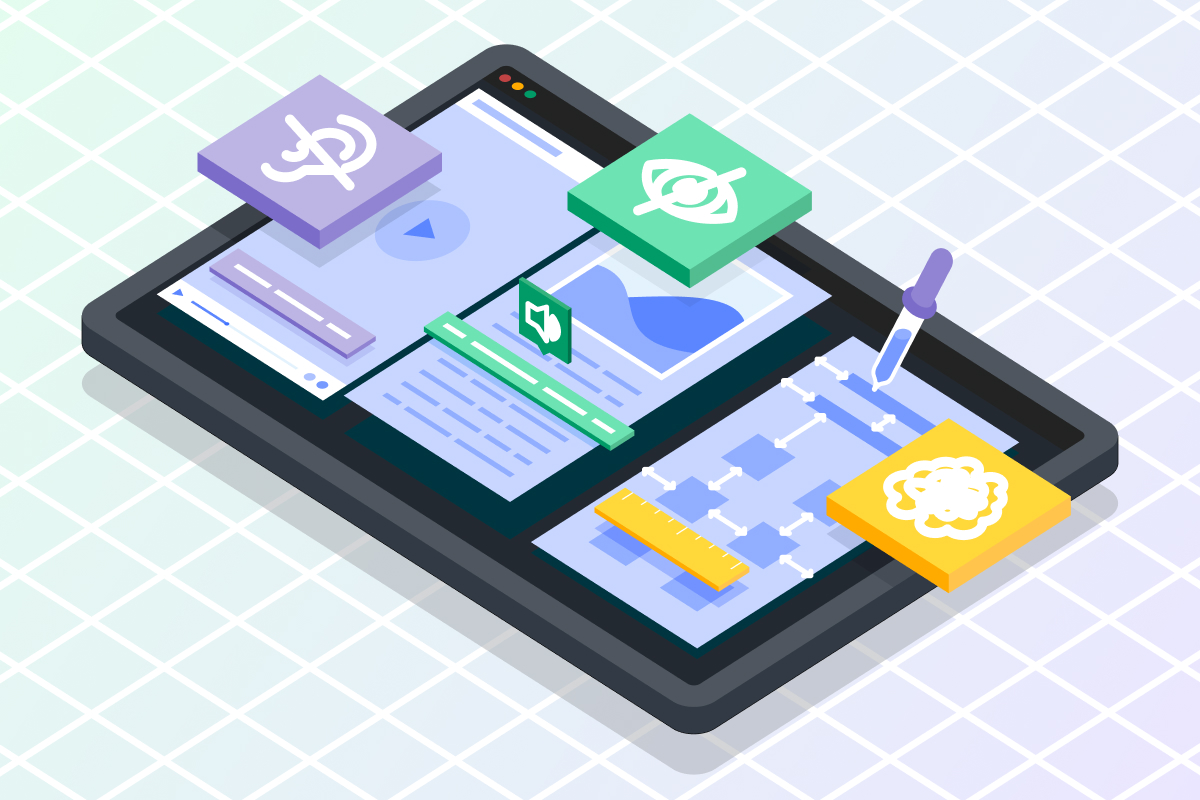Fintech has revolutionized how people around the world manage their finances. From mobile banking apps to digital wallets, fintech solutions have made financial services faster, more efficient, and more accessible.
According to the American Banking Association, 79% of customers report that digital innovations in banking make financial services more accessible. But, can fintech be as transformative for persons with disabilities as it has been for the general population?
The answer lies in making fintech inclusive—catering to the needs of all individuals, including those with disabilities. Fintech has the potential to empower millions who are currently underserved or excluded from the financial system.
Households with disabilities are three times more likely to be unbanked compared to those without disabilities. This disparity may stem from the fact that 24% of individuals with disabilities report facing challenges when using online banking services.
This article will explore how the fintech industry can embrace inclusivity, the challenges to overcome, and key strategies for building a more accessible financial ecosystem.

Understanding the Needs of People with Disabilities in Fintech
Creating an inclusive fintech environment starts with understanding the unique challenges faced by individuals with disabilities. Disabilities are varied and include visual, auditory, motor, and cognitive impairments, each of which requires specific design considerations in fintech platforms.
For example, users with visual impairments may face barriers with interfaces that rely heavily on visual elements, while users with motor impairments may struggle to navigate apps designed for touchscreen gestures.
Understanding these diverse needs is the first step toward building inclusive solutions that allow everyone to benefit from financial technology.
Key Features for Accessible Fintech Design
Making fintech accessible involves integrating features that accommodate various disabilities. Below are essential elements that every inclusive fintech platform should include:
- Screen Reader Compatibility: Ensure that your app works with screen readers like VoiceOver and JAWS, allowing visually impaired users to understand and interact with the interface.
- Voice Commands: Enable voice commands to help users with motor impairments navigate and interact with your fintech platform hands-free.
- Customizable Text Sizes and Color Contrast: Offer adjustable text sizes and high-contrast color schemes for users with visual impairments or color blindness.
- Keyboard Navigation: Design your app so that all functionalities can be accessed using a keyboard alone, for users who cannot use a mouse.
- Audio Captions and Transcripts: Include captions for video content and transcripts for audio material, ensuring that users with hearing impairments can access critical information.
- Focus Indicators: Clearly indicate which element is currently in focus on the interface to help users relying on keyboard navigation.
These features aren’t just "nice to have"—they are essential for ensuring accessibility in the fintech space.

Security and Accessibility: Balancing Safety with Usability
Security is a top priority for any fintech application, but many security measures unintentionally create barriers for users with disabilities. To ensure both security and accessibility, fintech platforms should:
- Offer Multiple Authentication Methods: Provide flexible login options such as biometrics (fingerprint, facial recognition), passwordless authentication, and multi-factor authentication via different channels (email, SMS, app).
- Accessible CAPTCHAs: Replace traditional image-based CAPTCHAs with alternatives such as audio or logic-based challenges to ensure users with visual or cognitive impairments can pass security checks without difficulty.
- Clear, Concise Security Instructions: Avoid using overly technical language in security prompts and error messages. Make instructions easy to follow for users with cognitive or learning disabilities.
By balancing security with accessibility, fintech companies can ensure that their platforms remain safe without excluding users.
Testing and Gathering Feedback from Persons with Disabilities
The most effective way to ensure your fintech solution is accessible is by testing it with persons with disabilities. Conduct usability testing that includes users from diverse backgrounds and abilities. Key strategies include:
- Involve Persons with Disabilities Early: Include individuals with disabilities in the design and development phases to gather insights that can help shape the product.
- Partner with Advocacy Groups: Collaborating with organizations that support individuals with disabilities can provide additional perspectives and ensure your product meets the real-world needs of its users.
- Gather Feedback Continuously: Use beta testing, focus groups, and ongoing user feedback to continuously improve your fintech solution.

Leveraging Emerging Technologies for Fintech Accessibility
Emerging technologies are opening new doors for accessibility in fintech. Here are some innovations that can further enhance inclusivity:
- Natural Language Processing (NLP): Advanced voice recognition systems allow users to interact with fintech apps using natural language, making them easier to use for individuals with mobility or dexterity impairments.
- Gesture-Based Interfaces: Motion sensors can interpret hand gestures, providing an alternative input method for users with physical disabilities.
- Eye-Tracking Technology: Eye-tracking tools can enable users with severe mobility impairments to navigate fintech platforms using only their eye movements.
- Brain-Computer Interfaces (BCI): Though still in early stages, BCI technology allows users to control applications with their brain signals, offering a future solution for individuals with motor disabilities.
- Haptic Feedback Systems: Haptic technology provides tactile feedback, helping users with visual or auditory impairments receive non-visual cues and improve their interaction with fintech platforms.

What are the Best Practices for Designing Accessible Fintech Apps
Clear and Simple Design
- Use minimalistic, straightforward layouts to reduce cognitive load.
- Implement clear navigation with intuitive menus and buttons.
- Break down complex processes into smaller, manageable steps.
- Use familiar design patterns to make users feel comfortable.
Accessibility Features
- Ensure compatibility with screen readers for visually impaired users.
- Implement voice command options for users with mobility impairments.
- Allow customization of text size, button size, and color contrast.
- Enable keyboard navigation for those who can't use a mouse or touchscreen.
Clear Communication
- Use simple, jargon-free language to explain financial concepts.
- Provide clear instructions and feedback for each action.
- Use data visualization (charts, graphs) to present complex information.
- Offer tooltips and contextual help for unfamiliar terms or features1.
Inclusive Design
- Design for users with varying levels of vision, hearing, and motor skills.
- Adhere to Web Content Accessibility Guidelines (WCAG).
- Conduct usability testing with diverse user groups, including those with disabilities.
- Provide alternative text for images and captions for videos.
Customization and Flexibility
- Allow users to personalize interfaces and settings.
- Offer multiple input methods (touch, voice, keyboard).
- Provide options to adjust notification preferences and dashboard layouts.
Security and Trust
- Implement robust security measures like two-factor authentication and biometrics.
- Clearly communicate privacy policies and data usage practices.
- Use visual cues to reinforce security during sensitive transactions.
Responsive Design
- Ensure the app functions well across various devices and screen sizes.
- Optimize for mobile use with touch-friendly interfaces.
Continuous Improvement
- Regularly collect and act on user feedback.
- Stay updated on accessibility guidelines and emerging technologies.
- Conduct periodic accessibility audits to identify and address issues.
By implementing these practices, fintech app developers can create more inclusive and user-friendly experiences that cater to a diverse user base, including those with disabilities. This approach not only enhances accessibility but also improves overall usability for all users.

Examples of Inclusive Fintech
While many fintech solutions strive to follow guidelines and make their apps accessible to people with disabilities, some have gone further and set new standards for inclusivity. Here are some standout examples from around the world:
1. US: Wells Fargo’s Accessible Banking Initiatives
- Wells Fargo has been a leader in providing accessible banking services. Their platforms offer screen reader compatibility for visually impaired users, and video banking with American Sign Language (ASL) interpreters for customers who are deaf or hard of hearing. Wells Fargo also has talking ATMs, providing audio instructions to assist visually impaired users in navigating ATM services independently. Their branches are designed with physical accessibility in mind, ensuring all customers can access essential services.
2. Canada: CIBC’s Accessibility Commitment
- Canadian Imperial Bank of Commerce (CIBC) has committed to creating accessible digital banking services. Their mobile app and website are compatible with screen readers and allow users to adjust text sizes for improved readability. They also offer TTY (Text Telephone) services for customers who are deaf or hard of hearing, ensuring that all clients can access their banking needs. CIBC actively partners with disability organizations to improve its services and meet the needs of users with various disabilities.
3. Australia: Commonwealth Bank’s Accessibility Features
- Commonwealth Bank of Australia (CBA) integrates robust accessibility features into its digital services. Their CommBank app is equipped with voiceover capabilities and magnification options for visually impaired users. CBA’s ATMs feature audio guidance for customers with visual impairments, and the bank provides captioned video tutorials to ensure users with hearing impairments can navigate their services. Their commitment to accessibility extends to staff training, ensuring employees are prepared to support customers with disabilities in branches.
4. UK: Barclays Accessible Banking
- Barclays in the UK is recognized for its inclusive approach to digital banking. Their mobile app is designed with high-contrast mode, adjustable text sizes, and screen reader compatibility to accommodate users with visual impairments. Barclays also offers voice biometrics for secure login, helping customers with motor disabilities or visual impairments avoid traditional PIN input. Their Talking ATMs and tactile debit cards further enhance accessibility, and they maintain an accessibility microsite that helps customers find the services they need.
5. Netherlands: ING Group’s Accessibility Initiatives
- The ING Group, headquartered in the Netherlands, has developed digital banking services that are fully WCAG 2.1 compliant, ensuring accessibility for all users. They provide voice navigation for visually impaired customers and offer real-time assistance through multiple communication channels to support users with varying needs. ING continually improves its accessibility offerings by gathering feedback from customers with disabilities.
6. Thailand: Kasikornbank’s Mobile Application
- Kasikornbank in Thailand developed a mobile app specifically designed for individuals with visual impairments and the elderly. It incorporates voice commands, vibrations, and intuitive finger gestures to help users complete transactions without needing to see the screen. The app’s multi-sensory feedback system ensures seamless navigation, making it highly accessible for users with disabilities.
7. China: WeBank’s Accessibility Features
- WeBank, a product of Tencent in China, has integrated cutting-edge accessibility features, such as biometric authentication, AI-driven speech synthesis, and real-time image processing, to support visually impaired users. WeBank’s platform uses advanced technology to provide accessible financial services and shares its findings with the broader fintech community through an open-source development framework, promoting accessibility across the industry.

The Path Forward: Making Inclusive Fintech the Norm
The future of fintech must be inclusive, ensuring that technological advancements benefit everyone, regardless of their abilities. Achieving this requires continued collaboration with advocacy groups, ongoing user testing, and a commitment to meeting evolving accessibility standards.
By embracing accessibility, fintech companies not only tap into a diverse and underserved market but also foster a more equitable financial landscape. Inclusivity in fintech should not be an afterthought—it must be an inherent characteristic of innovation.
Let’s work together to create a future where accessibility and innovation go hand in hand, ensuring that fintech truly serves everyone.
Resources
When designing accessible fintech platforms, it's essential to familiarize yourself with regulations such as the Americans with Disabilities Act (ADA) and accessibility guidelines like the Web Content Accessibility Guidelines (WCAG).
These standards provide a framework for creating digital platforms that are accessible to individuals with disabilities. Compliance with these guidelines ensures not only legal adherence but also a better user experience for all customers.
For additional guidance, fintech companies can refer to resources such as:
- The ADA National Network for information on ADA compliance.
- The World Wide Web Consortium (W3C), which provides detailed WCAG standards for accessible web and mobile design.
- The U.S. Access Board, which offers training and webinars on accessibility standards for digital products.














